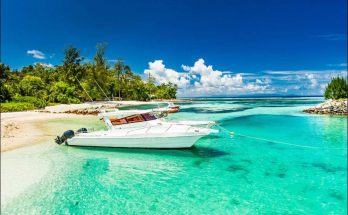The many years of early exploration throughout the whole extent of the continent, carried on by brave individual adventurers and trappers chiefly from Spain and France before the year 1620 had almost no effect in shaping the after-history and development of America’s travel system.
The significance of any discovery in its relation to the subject, whether of route or method of travel, did not lie in the earliest information respecting that route or method, but in the popular impulse which was later — sometimes much later — to recognize its value and demand its use. It was necessity or comprehension, not knowledge; the needs or desires of the people rather than the exploits and achievements of individuals that always influenced the progress of the system and led on, little by little, to what now exists.
Hence it was that definite and visible progress in creating established methods of getting about the country did not begin until several English colonies had found firm foothold along the Atlantic coast. There were three motives that caused the first travel movements among the early population. One was the natural wish of a settlement to get into touch with its neighbors; another was need of betterment and growth; and the third was an occasional impulse, due to differences of one sort or another, which sometimes caused part of a colony to separate from the rest of it and go elsewhere to set up for itself.
The five principal localities from which radiated the first travel movements of the country were the Chesapeake Bay region; eastern Massachusetts; New York Bay and the Great River of the Mountains; the Connecticut River valley and Long Island Sound; and Delaware Bay and the Delaware and Susquehanna Rivers. Three of these, the Chesapeake, New York and Delaware Bays, are important among those gateways already referred to through which the interior of the country is accessible from the Atlantic seaboard.
But the two biggest entrances of all—the Mississippi River with its tributaries and the St. Lawrence River and the Great Lakes — were destined to play a much smaller part in the story than their importance warranted. For it so happened that the course of wars and politics in Europe produced conditions in America which deprived the Mississippi, the St. Lawrence River and the lakes of much of the influence they might otherwise have had in shaping the development of travel in America.
For generations five mutually jealous and conflicting groups were quarreling and fighting in an effort to get control of the continent. Each of three nations— France, Spain and England — was scheming to extend its own possessions and oust the others; the English colonies were trying to secure the administration of their own affairs; and the Indians were doing what they could to be rid of the lot or restrict their movements.
The continuous control of the St. Lawrence by the French for nearly a hundred and fifty years after the arrival of the first English colonies, and the similar uninterrupted holding of the Mississippi by France and Spain until some time after the Revolution, long prevented the use of those two gateways as factors in any progress in which the English speaking inhabitants were interested. And the impulse which was finally to result in giving the Mississippi a place in the free and unobstructed travel system of the country came, not from its mouth, but from the upper valley of the stream, where a vigorous English speaking population had become established and demanded the use of the river.
By about the year 1636, then, the movement of the population in and from all of the five regions named had already begun and some action had been taken, both by the guiding minds of the colonies and by the people on their own impulse, to make such travel as easy and rapid as was possible under the conditions that surrounded them. On order of the authorities of Plymouth Colony all creeks and rivulets were bridged by felling trees across them, and canoe ferries were established for the passage of the larger streams.
A few of the first canoes used by the people of Massachusetts Bay and Plymouth Colony were doubtless of the birch variety, bought from the Indians, but the prompt and unfortunate results of the unstable equilibrium of those canoes under the unpracticed guidance of the white pioneers quickly decided them to shift to the less graceful, but more calm and sedate type of craft such as was made by hollowing a log.
It is not difficult to picture the inward emotion of an Indian as he sold a birch-bark canoe to a high hatted Pilgrim, and then, standing on the river bank, watched his customer step into the craft, only instantly to leave it from the other side and disappear head first into the water. Having fished out the white interloper the red man would buy back his canoe, enter it, and depart. After the adoption cf log canoes became general, and as population increased, trees especially suitable for canoe making were often marked by the authorities and protected by orders which forbade their use for any other purpose.
Visits: 171



